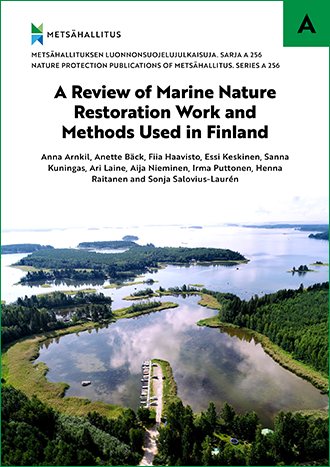A Review of Marine Nature Restoration Work and Methods Used in Finland
The ecological status of the Baltic Sea has deteriorated because of long-standing human activities. The need to protect and restore the Baltic Sea, its habitats, and its species has recently been identified. This is to conserve the valuable ecosystems and functions of the Baltic Sea, which are also of high value to humans. Several preconditions are required to achieve favourable biodiversity status and ecosystem services while fulfilling national and international commitments. These include managing, expanding, and developing the network of protected marine areas and taking active measures to restore, rehabilitate, and improve the status of both the habitats and the species they maintain.
This report contains information on various restoration methods aimed at improving the status of habitats and species in Finnish coastal waters. The report was compiled as part of the LIFE-IP Biodiversea project (2021–2029) to point the way for drawing up a national restoration plan for Finland’s coastal area and, by providing examples, to support the selection of restoration measures. Although this report mainly focuses on measures used in Finland, the authors have also striven to incorporate experiences from the entire Baltic Sea and elsewhere in the world that we consider suitable for Finnish conditions. The report emphasises information aimed at facilitating the planning of future restoration measures, which is why it focuses on the lessons learned, experiences, and challenges relating to the methods, in addition to ideas aimed directly at improving or developing them. The report also sums up the costs incurred from various measures to support planning processes.
In this report, we introduce restoration methods from the perspective of both habitats (those listed in the Habitats Directive) and species. Restoration methods are discussed in the section on the habitat type or species of which the most significant amount of experience has been gathered or for which the method was considered the most suitable. Measures relevant to fisheries are presented in the sections on measures associated with species, such as large predatory fish, which, in particular, are vital for habitats. The report additionally includes methods similar to restoration measures. While these measures do not target habitats or species directly, they may be important for improving water quality, marine areas and processes or creating space for species.
Although a selection of tools and measures for restoring marine environments are currently available, efforts to assess their impact are only taking their first steps. As challenges to restoration work, this report highlights marine eutrophication and the poor status of waters, scarcity and fragmentation of research evidence and monitoring data, gaps in Finnish-language restoration terminology, the short duration of restoration projects, ownership of land and water areas, insufficient resources and expertise, and bottlenecks caused by permit processes.

